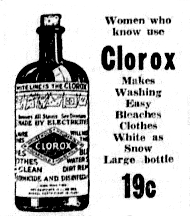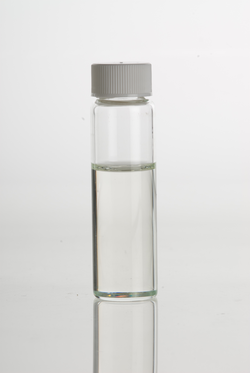Cleaning products


- Air freshener
- Automatic deodorizer dispenser
- Ajax (cleaning product)
- Arm & Hammer (brand)
- Bar Keepers Friend
- Bath brick – patented in 1823, it was a predecessor of the scouring pad used for cleaning and polishing
- Behold
- Bio Pac Inc
- Biological detergent
- Blanco (compound)
- Bluing (fabric)
- Bon Ami
- Borax
- Brillo Pad
- Bronze wool
- 2-Butoxyethanol
- Calcium Lime Rust
- Cif
- Cleret Glass Cleaner
- Colour Catcher
- Comet (cleanser)
- Denture cleaner
- Descaling agent
- Detergent
- Didi Seven
- Dishwashing liquid
- Dispensing ball
- Disposable towel
- Dolly blue
- Domestos
- Donkey stone
- Drano
- Dryer ball
- Dust-Off
- Ecover
- Endust
- Fabric softener
- Fairy (brand)
- Falcon Safety Products
- Bon Ami Company
- Febreze
- Finish (detergent)
- Formula 409
- Frosch USA
- Gas duster
- Glade (brand)
- Guar hydroxypropyltrimonium chloride
- Hard-surface cleaner – a category of cleaning agents comprising mainly aqueous solutions of specialty chemicals
- Hillyard, Inc.
- Laundry ball
- Lestoil – a heavy-duty multi-purpose cleanser product
- Liquid-Plumr
- Monkey Brand – a soap introduced in the 1880s as a household scouring and polishing soap, in cake/bar form
- Mr Sheen
- Mrs. Stewart's Bluing – a brand of fabric bluing agent first marketed in 1883 that whitens fabrics with a proprietary blue dye, primarily made of blue iron powder
- Murphy Oil Soap
- OxiClean
- Paper towel
- Phisoderm
- Piranha solution
- ReNu
- Retr0bright
- Rozalex
- Rubbing alcohol
- Seventh Generation Inc.
- Saddle soap
- Scotch-Brite
- Scouring pad
- Shake n' Vac
- Shoe polish
- Simple Green
- Snuggle
- S.O.S Soap Pad
- Soap
- Soap on a rope
- Soap substitute
- Sodium bisulfate
- Sodium hydroxide
- Sodium polycarboxylate
- Spic and Span
- Spiffits
- Sponge (material)
- Steel wool
- Surf (detergent)
- Swarfega – a brand of heavy-duty hand cleaner
- Tawashi
- Toilet cleaner
- V-Bor
- Vegetable wash
- Vim (cleaning product)
- Yucca glauca
Brands


- 20 Mule Team Borax
- 2000 Flushes
- Ariel (detergent)
- Bosisto's
- Bounty (brand)
- Brasso
- Calgon
- Cheer (brand)
- Chore Boy
- Cillit Bang
- Clorox
- Comfort (fabric softener)
- Dawn (brand)
- Downy
- Fels-Naptha
- Frosch USA
- Glass Plus
- Gold Dust washing powder
- Harpic
- Joy (dishwashing liquid)
- Lysol
- Leifheit
- Mr Muscle
- Mr Sheen
- Mr. Clean
- Palmolive (brand)
- Pledge (brand)
- Purell
- Purex (laundry detergent)
- Rinso
- Scrub Daddy
- Scrubbing Bubbles
- Suavitel
- Supamop
- Swiffer
- Tide (brand)
- Ty-D-Bol
- Vanish (brand)
- Vileda
- Windex
- Woolite
Disinfectants



Disinfectants are antimicrobial agents that are applied to the surface of non-living objects to destroy microorganisms that are living on the objects. [1]
- Air sanitizer
- Antimicrobial copper-alloy touch surfaces
- Barbicide
- Barium borate
- BCDMH
- Behentrimonium chloride
- Benzethonium chloride
- Benzododecinium bromide
- Bleach
- Bromine monochloride
- Calcium oxide
- Calcium peroxide
- Carbethopendecinium bromide
- Carbol fuchsin
- Carbolic soap
- Chlorhexidine
- Chlorine dioxide
- 2-Chlorophenol
- Creolin
- Cresolene
- Crystal violet
- DBDMH
- Diazolidinyl urea
- Electrolysed water
- Ethanol
- Eucalyptus oil
- Fuchsine
- Germicidal lamp
- Gluma
- Glutaraldehyde
- Hand sanitizer
- Hexachlorocyclohexa-2,5-dien-1-one
- Hydrogen peroxide
- Hypochlorous acid
- Hypomide
- Imidazolidinyl urea
- Iodophor
- Isopropyl alcohol
- Jeyes Fluid – a brand of disinfectant fluid
- Lapyrium
- Lithium hypochlorite
- Lugol's iodine
- Magnesium monoperoxyphthalate
- Methyl violet
- Milton sterilizing fluid
- Nitromersol
- Ozone
- Peracetic acid
- Phenols
- Pine oil
- Polyaminopropyl biguanide
- Potassium hypochlorite
- Potassium permanganate
- Povidone-iodine
- Pseudomonas aeruginosa
- Quaternary ammonium cation
- Sodium dichloroisocyanurate
- Sodium hypochlorite
- Sodium metabisulfite
- Sodium permanganate
- Thymol
- Tincture of iodine
- 2,4,6-Trichlorophenol
- Vaporized hydrogen peroxide
- Virkon – a multi-purpose disinfectant product
- Wet wipe
Laundry detergents
Laundry detergent, or washing powder, is a type of detergent (cleaning agent) that is added for cleaning laundry.
- Annette's Perfect Cleanser Company – was a 1930s era firm which manufactured a dry powder which was useful for removing spots and stains from clothing
- Ariel (detergent)
- Biz (detergent)
- Bold (detergent)
- Breeze detergent
- Cheer (brand)
- Cold Power
- Colour Catcher
- Dash (detergent)
- Daz (laundry detergent)
- Didi Seven
- Dreft
- Fresh Start (detergent)
- Gain (detergent)
- Ghari Detergent
- Laundry detergent pod
- Luvil
- Nirma
- Oxydol
- Persil
- Persil Power
- Purex (laundry detergent)
- Rinso
- Sunlight (cleaning product)
- Surf (detergent)
- Surf Excel
- Tide (brand)
- Tolypers
- Wheel (detergent)
- WIN (detergent)
- Wisk – discontinued in 2016
- Woolite
Soaps


In chemistry, a soap is a salt of a fatty acid. [2] Household uses for soaps include washing, bathing, and other types of housekeeping, where soaps act as surfactants, emulsifying oils to enable them to be carried away by water.
- African black soap
- Aleppo soap
- Antibacterial soap
- Azul e branco soap
- Carbolic soap
- Castile soap
- Cuticura soap
- Glycerin soap
- Gossage
- Hard soap
- Lye
- Marseille soap
- Nabulsi soap
- Phisoderm
- Popish soap
- Rebatching
- Resin soap
- Saltwater soap
- Shaving soap
- Sodium stearate
- Stainless steel soap
- Sugar soap
- Vegan soap
Soap brands


- Ach. Brito
- Biechele Soap
- Boraxo
- Camay
- Caswell-Massey
- Chandrika (soap)
- Coast (soap)
- Defense Soap
- Dial (soap)
- Dove (toiletries)
- Faso soap
- Fels-Naptha
- Fenjal
- Godrej Consumer Products Limited
- Hamam (soap)
- Imperial Leather
- Irish Spring
- Ivory (soap)
- Joy (dishwashing liquid)
- Kerala Soaps
- L'Amande
- Lano (soap)
- Lava (soap)
- Lever 2000
- Lifebuoy (soap)
- Liril
- Lux (soap)
- Margo (soap)
- Medimix
- Mysore Sandal Soap
- Nivea
- Old Spice
- Palmolive (brand)
- Pears (soap)
- Proraso
- Rozalex
- Sapolio
- Sebamed
- Shower Shock
- Simple Skincare
- Sunlight (cleaning product)
- Swan Soap
- Swarfega
- Wright's Coal Tar Soap
- Zest (brand)